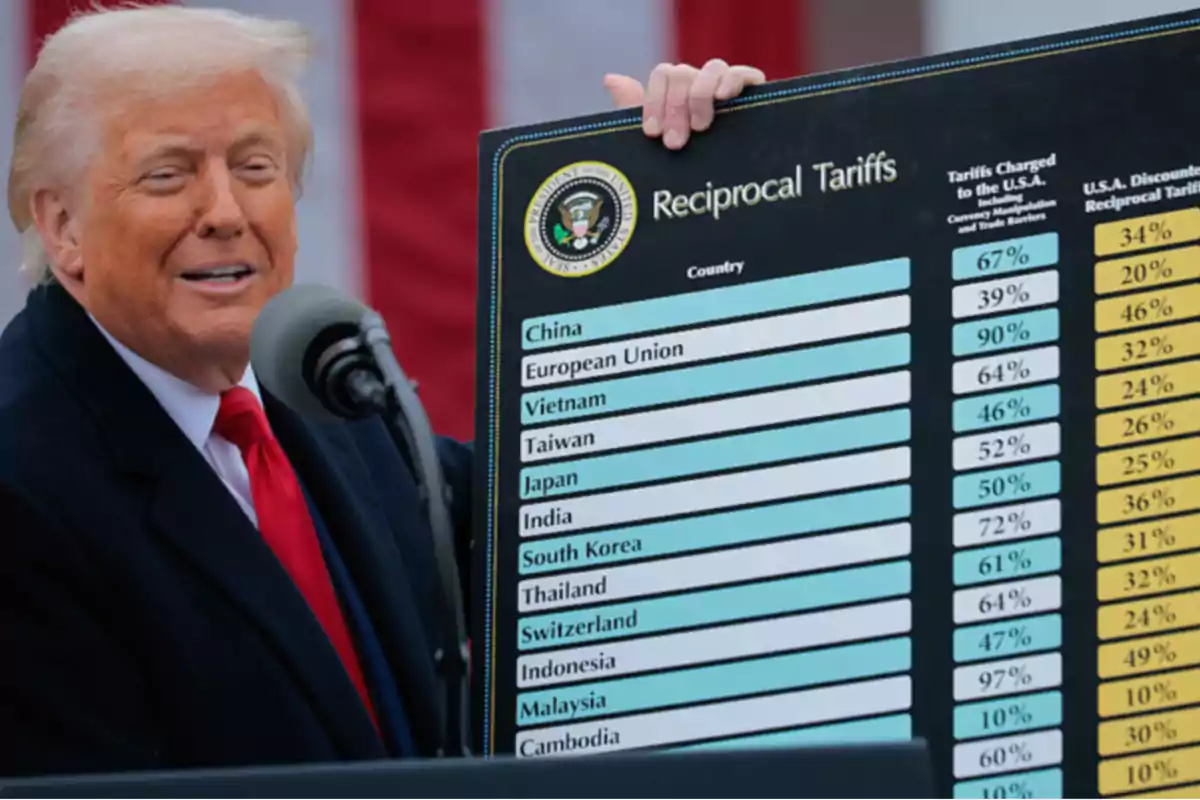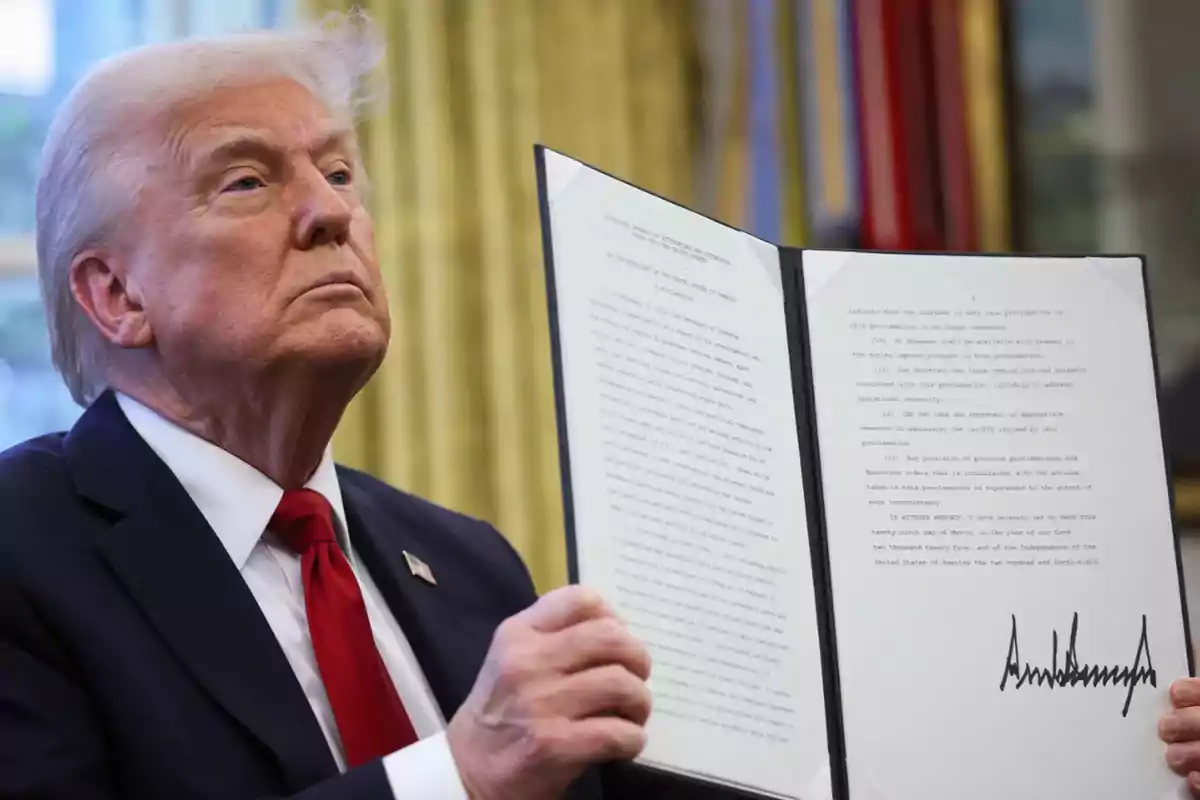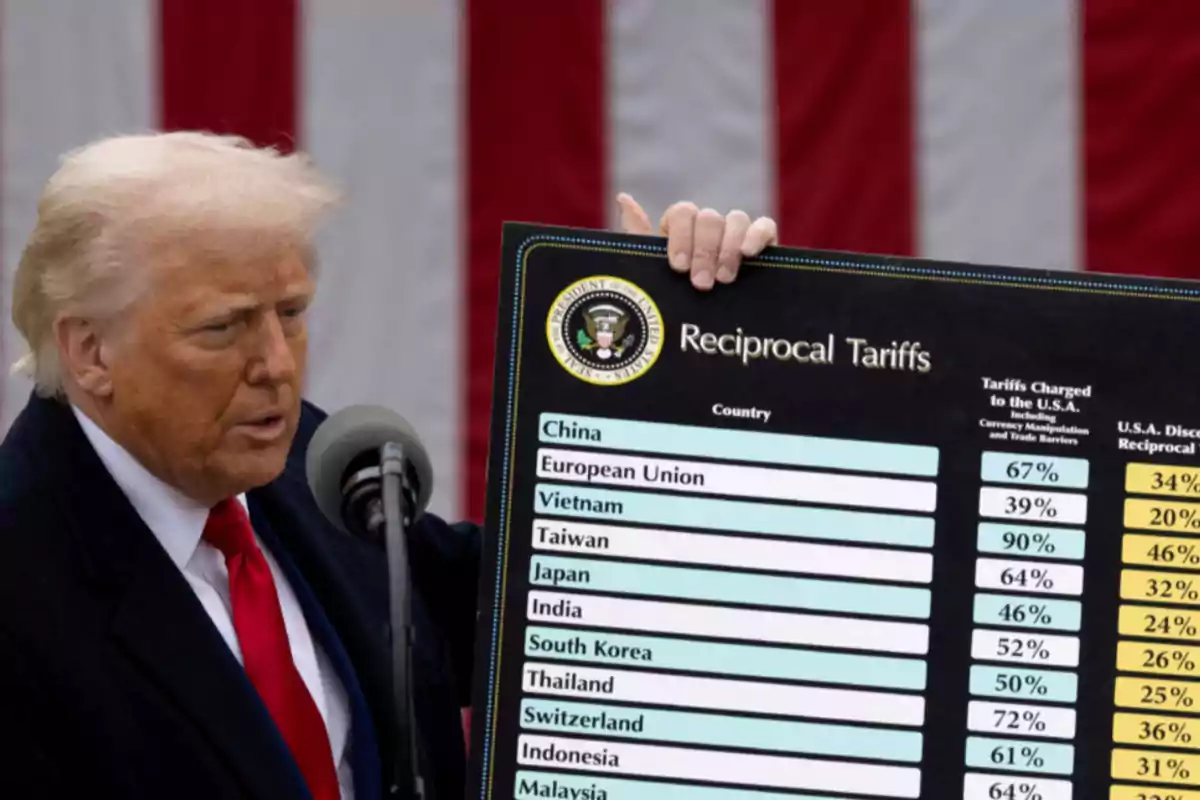
Donald Trump will send letters with new tariffs to 14 countries in Asia and Africa.
The majority of these economies maintain deep trade ties with the United States
The president of the United States, Donald Trump, intensified his trade strategy by warning that he will impose new tariffs of up to 40% on 14 countries, mainly from Asia and Africa, starting next August 1 if a bilateral agreement is not reached.
The measure could strongly impact key sectors of exporting countries and reshape strategic economic relations.
Which countries are in Trump's sights
According to the AFP agency, the list of countries includes:
- Asia: South Korea, Japan, Indonesia, Cambodia, Myanmar, Laos, Thailand, Malaysia, Bangladesh, Kazakhstan
- Africa and Eastern Europe: South Africa, Tunisia, Serbia, and Bosnia
The majority of these economies maintain deep trade ties with the United States, serving as relevant suppliers in industries such as textiles, automotive, agriculture, energy, and industrial inputs.

South Korea and Japan: allies under pressure
In the case of South Korea, the warning adds to the tariffs already in place on steel and the automotive sector. The new surcharge could be an additional 25%. Nevertheless, Seoul expressed optimism by stating that "there is still time to negotiate" before the deadline.
Japan, the main foreign investor in the U.S., is also seeking to avoid an escalation. Although it was already facing 25% tariffs on its automotive industry, a new "reciprocal" tariff of the same percentage is now being considered. Tokyo is trying to maintain access to its largest external market without compromising its domestic interests too much.
Indonesia, Cambodia, and Thailand seek agricultural agreements
Indonesia replied pragmatically. Its Minister of Economy, Airlangga Hartarto, announced an agreement to import at least one million tons of U.S. wheat per year for five years, as part of a strategy to achieve a tariff pact.
Other Southeast Asian countries, such as Cambodia, Myanmar, and Laos, face tariffs ranging from 36% to 40%. In Cambodia's case, the new percentage is a decrease compared to the 49% announced in April, but it remains a serious threat to its economy, which is highly dependent on textile exports.
Thailand, meanwhile, proposes to expand its imports of U.S. agricultural and industrial products, in addition to opening more space in the energy and aerospace sectors.

Malaysia, Bangladesh, and Africa: the most exposed
Malaysia, divided between the influence of China and the United States, faces a possible 25% tariff. Its government expressed willingness to reach a "balanced and comprehensive trade agreement."
Bangladesh, the world's second-largest textile producer, could be severely hit by 35% tariffs. Any restriction on access to the U.S. market would directly affect its economy and employment levels.
In Africa, South Africa (30%) and Tunisia (25%) are also among the notified countries, while in Eastern Europe, Serbia and Bosnia would face tariffs ranging from 30% to 35%.
A policy of trade pressure
Trump's tariff offensive is part of a policy aimed at reducing the United States' trade deficit and protecting American interests. The sending of formal letters to governments is the chosen way to open bilateral negotiations: if they accept the terms, they avoid the tariffs; if not, they will take effect on August 1.
More posts: